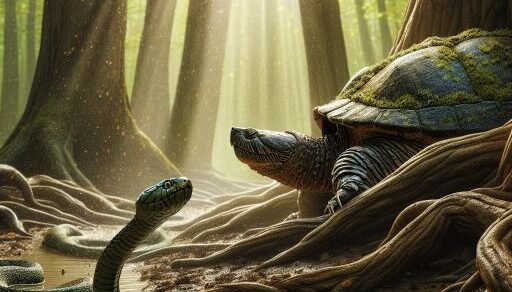The moose and the caribou, two iconic ungulates of the Northern Hemisphere, are often subjects of fascination due to their unique characteristics and roles in their respective ecosystems. This article delves into their distinct features, ecological significance, and hypothetical combat scenarios to provide a detailed understanding of these magnificent creatures.
Overview and Description
Moose: The Forest Giants
Moose are the largest members of the deer family, Cervidae. Their imposing stature, with males (bulls) standing up to 6.5 feet at the shoulder and weighing as much as 1,500 pounds, is complemented by their distinctive features: long, drooping noses, and massive antlers that can span over 6 feet across in mature bulls. They are primarily solitary animals, adapted to life in North American and Eurasian boreal forests and temperate broadleaf and mixed forests.

Caribou: Nomads of the Tundra
Caribou, known as reindeer in Europe, are smaller than moose, with males weighing between 350 to 400 pounds. They are renowned for their incredible migratory patterns, covering up to 3,000 miles annually – the longest of any terrestrial mammal. Both male and female caribou grow antlers, which is a unique feature among deer species. Their fur is thicker and denser, an adaptation to their Arctic and Subarctic habitats.

Ecological Roles
Moose: The Ecosystem Engineers
Moose play a critical role in shaping their environment. Their browsing habits influence the structure and composition of forests. By selectively feeding on specific plants, they create habitats favorable to certain wildlife species. Moose also serve as a key food source for predators like wolves and bears, thus playing a significant role in the trophic dynamics of their ecosystems.
Moose Role in preventing global warming
Recent studies have highlighted the significant role moose play in global warming and forest ecosystems. Their browsing habits can dramatically alter carbon emissions from boreal forests, especially in areas affected by clear-cutting. Moose often prefer certain types of trees, like deciduous species, over coniferous ones such as spruce. This preference impacts the composition of regrowing forests, favoring species preferred by the forest industry. While this assists the industry by reducing competition, it potentially increases carbon emissions as the consumed trees are often better at sequestering carbon. Researchers emphasize finding a balance in managing moose populations and forested lands to limit carbon emissions, enhance biodiversity, and improve forest productivity. For more detailed information, refer to the articles on Phys.org and Yahoo News.
Caribou: Keystone Species of the Arctic
Caribou are integral to the Arctic ecosystem. They influence vegetation patterns through grazing, and their migration patterns affect the distribution of nutrients across vast landscapes. As a primary prey species for wolves and polar bears, they have a significant impact on the population dynamics of these predators.
Natural Predators and Survival Strategies
Moose and caribou have evolved different strategies to evade predators. Moose rely on their size and strength, often standing their ground against wolves and bears. Their powerful kicks can be lethal. In contrast, caribou depend on their agility and the safety of numbers. Their herding behavior and remarkable endurance help them outrun predators like wolves.
Comparative Analysis of Strengths and Weapons
Moose: Raw Power and Antler Might
The moose’s sheer size gives it an advantage in terms of raw physical power. Their antlers, used primarily for mating displays and combat with other males, are formidable weapons. Their muscular build and endurance are suited for short, intense confrontations.
Caribou: Speed and Endurance
While caribou lack the physical dominance of moose, they compensate with greater agility and stamina. Their antlers are smaller and less powerful than those of moose but can still be used effectively in defense.
Hypothetical Combat Scenario
In a theoretical encounter between a moose and a caribou, several factors would influence the outcome:
- Size and Strength: The moose’s larger size and strength would give it a significant advantage in a physical confrontation.
- Endurance and Agility: The caribou’s superior endurance and agility could help it outmaneuver the moose, although this is less effective in direct combat.
- Fighting Tactics: Moose engage in more aggressive and direct combat than caribou, which could be a critical factor.
Conclusion and Win Probability
While a direct conflict between a moose and a caribou is unlikely in the wild due to their differing habitats and behaviors, in a hypothetical battle, the moose would likely have the upper hand due to its superior size, strength, and aggressive fighting style. The probability of a moose winning in such a scenario could be estimated at around 75%, considering the various factors discussed.
In conclusion, while moose and caribou share some familial ties, their differences in size, habitat, behavior, and ecological roles are profound. Both species are fascinating in their own right and play crucial roles in maintaining the balance of their respective ecosystems.




